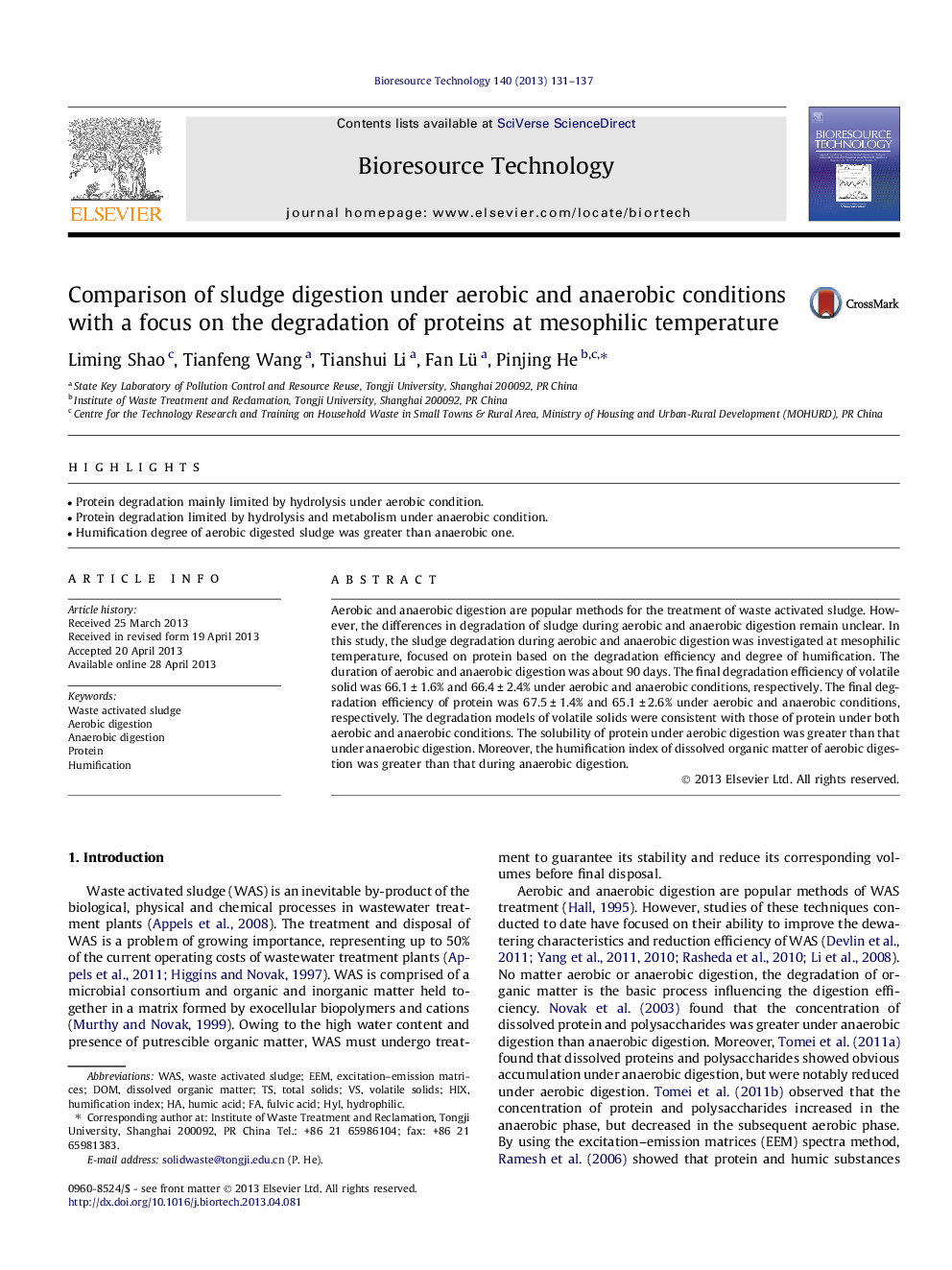| Article ID | Journal | Published Year | Pages | File Type |
|---|---|---|---|---|
| 7081985 | Bioresource Technology | 2013 | 7 Pages |
Abstract
Aerobic and anaerobic digestion are popular methods for the treatment of waste activated sludge. However, the differences in degradation of sludge during aerobic and anaerobic digestion remain unclear. In this study, the sludge degradation during aerobic and anaerobic digestion was investigated at mesophilic temperature, focused on protein based on the degradation efficiency and degree of humification. The duration of aerobic and anaerobic digestion was about 90 days. The final degradation efficiency of volatile solid was 66.1 ± 1.6% and 66.4 ± 2.4% under aerobic and anaerobic conditions, respectively. The final degradation efficiency of protein was 67.5 ± 1.4% and 65.1 ± 2.6% under aerobic and anaerobic conditions, respectively. The degradation models of volatile solids were consistent with those of protein under both aerobic and anaerobic conditions. The solubility of protein under aerobic digestion was greater than that under anaerobic digestion. Moreover, the humification index of dissolved organic matter of aerobic digestion was greater than that during anaerobic digestion.
Keywords
Related Topics
Physical Sciences and Engineering
Chemical Engineering
Process Chemistry and Technology
Authors
Liming Shao, Tianfeng Wang, Tianshui Li, Fan Lü, Pinjing He,
